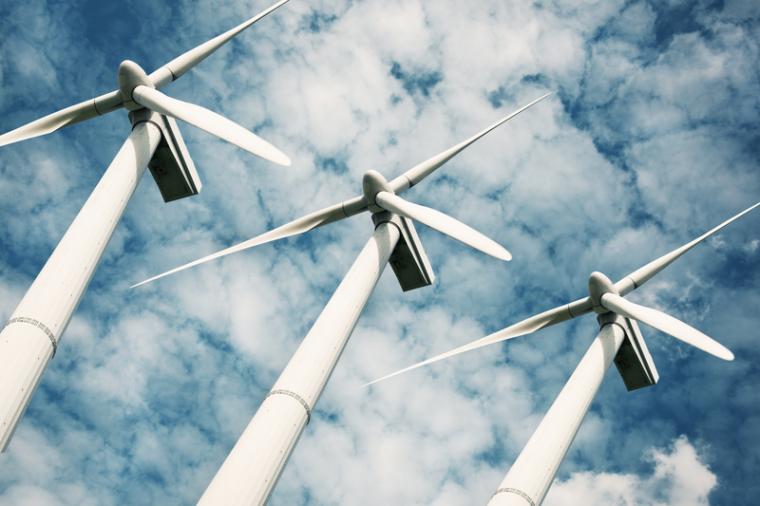

Biofuels! Solar! Clean energy! In 2009, with oil trading at greater than $80 a barrel, the economic development world was abuzz with announcements for renewable, alternative energy investments.
The Department of Energy’s (DOE) American Recovery and Reinvestment Act, passed in February of 2009, made $90 billion available to clean energy companies in the form of grants, tax incentives and loan guarantees. From advanced batteries to solar electricity generation, clean energy companies lined up to take advantage of this stimulus money.
One of the companies to receive funding from the American Recovery and Reinvestment Act was Solyndra, a solar panel manufacturer. In 2010, with the help of $535 million from the federal government, Solyndra opened up its state-of-the-art fabrication facility in Fremont, California.
By 2011, the company was filing for bankruptcy and laying off over 1,000 employees.
One can see this same story playing out across the United States. Atop a mesa in Albuquerque sits one million square feet of industrial space constructed to house a large solar panel manufacturer, largely empty since 2011. In Clarksville, Tennessee, a billion dollar investment in polysilicon, the essential raw material for solar panels, sits idle. In Mississippi, plans for multiple biofuel production plants go unrealized. All of these are remnants of failed alternative energy projects.

Despite the very high-profile failures of various alternative energy companies over the past few years, what is really going on in this industry? Is alternative energy just a fad? Should I install solar panels on top of my split-level? And how does natural gas play into all this?
What Is Alternative Energy?
As defined by Oxford Dictionary, alternative energy refers to “energy generated in ways that do not deplete natural resources or harm the environment, especially by avoiding the use of fossil fuels and nuclear power.” Alternative energy is synonymous with other terms such as clean energy or renewable energy.
Early man quickly learned how to harness the renewable resources of the earth -- wind, water, sun and wood -- the original biofuel. But during the industrial revolution, mankind turned to coal, oil and natural gas to generate its rapidly growing energy needs. It was only during the last 50 years or so, since the creation of the Environmental Protection Agency and the energy crises of the 1970s that we turned back to natural, renewable resources for energy. But from then until now, the industry has gotten off to a surprisingly slow start.
The State of Alternative Energy
In 1949, the United States consumed 32 quadrillion BTUs of energy. Renewable energy, mostly hydropower, made up 9.3 percent of that consumption. By 2014, total consumption had tripled to 97 quadrillion BTUs but renewables still only made up 9.8 percent of total energy consumption.
In contrast, estimates from the U.S. Energy Information Administration (EIA) in this year’s Annual Energy Outlook, predict that renewable electricity generation will increase by 72 percent from 2013 to 2040, and renewables will make up 18 percent of total electricity generation for the United States by the year 2040. Most of the increase is expected in wind and solar while hydroelectric generation is anticipated to remain stable.

Harnessing the Wind
From boats to windmills, mankind has been taking advantage of wind for thousands of years. And for the last 150 years, wind has been a source of electricity for the North American landscape. By harnessing this widely available resource, wind power provides the opportunity to avoid greenhouse gas emissions and intense water consumption, both commonplace with hydrocarbon-based power plants.
Despite the continued presence of wind energy, public and government interest has ebbed and flowed over the past century. However, due to progress in technology, government initiatives, and energy market factors, wind energy has become a consistent presence in the United States’ power (and geographic) landscape. Wind farms with turbines stretching 250 feet into the air are now commonplace in many parts of the country.
According to the DOE’s Enabling Wind Power Nationwide report distributed in May of this year, utility scale wind installations exist in 39 states. In 11 states, wind generation comprises at least 12 percent of their electrical capacity. As of 2013, nearly $125 billion had been invested and nearly 50,000 jobs were being supported by the wind industry.
For wind generation to continue and be deployed on a larger scale, the DOE’s Wind Vision report highlights three important elements that must continue:
1. Improvement in technology, such as taller towers and advanced control systems, will continue to drive down operating costs, allowing for cheaper wind energy prices.
2. Transmission lines must be able to access geographic areas of wind resources. In one recent example, a Houston-based company named Clean Line Energy Partners plans to build a $2 billion transmission line from Oklahoma to Tennessee. This 3,500 MW direct current line, which loses less electricity than the more common alternating current transmission lines, is set to begin construction in 2015. This line will allow utilities in the southeast, where there is less wind power generation, the opportunity to access a viable source of clean energy.
3. Pricing must favor renewable power sources. Since 1992, the federal government’s Production Tax Credit has paid each wind operator 2.3 cents for every kilowatt-hour that is produced during its first 10 years of operation. That tax credit expired at the end of 2014 and has yet to be renewed. However, Obama’s 2016 budget proposal for the federal government is recommending that the tax credit become permanent.
If the above three elements remain true, Wind Vision estimates that by 2030, wind installations will total 224 GW of generating capacity. This is nearly a 300 percent increase from its 2013 levels. Under this 2030 scenario, wind energy will support 375,000 jobs and $1.8 billion in local and tax revenue.
Capturing the Sun
Unless you have been living under a rock, you are now familiar with the sight of solar panels. If you live in Hawaii or California, chances are you even have some of these panels on your house. If you happen to live in or have been to the town of Krommenie, Netherlands, you probably have even ridden your bike over a solar panel bike path.
For a renewable generation, solar is the fastest-growing energy source. To understand the growth of solar energy, consider the following information:
-
According to the EIA, approximately 16 gigawatt hours of net generation was produced from all solar photovoltaic sources in 2005. At the end of 2014, generation had increased 1,000 fold to 16,000 gigawatt hours.
-
From 2013 to 2014, the U.S. more than doubled their utility-scale solar generation, and 2015 is set to be the best year ever for solar, with Bloomberg New Energy Finance anticipating 9.1 GW of new generation to come online.
-
According to The Solar Foundation’s 2014 National Solar Jobs Census, approximately 174,000 people were employed in the solar industry, a 21.8 percent increase from November of the previous year.
The question is not whether solar generation is good for the environment. The sun will be around for another five billion years. The issue is whether solar makes economic sense. In states with lots of sun and high electrical prices, such as Hawaii and California, solar panels have become a popular investment. Utilizing the federal government’s Investment Tax Credit, which offers a 30 percent federal tax credit to both commercial and residential properties, installing solar panels has become even more attractive. However, this tax credit will no longer be available at the beginning of 2017. The loss of this policy, which has been one of the most important factors to the growth of solar in the United States, has the potential to significantly affect the growth of the industry. But as with the Production Tax Credit, the 2016 U.S. budget proposal includes a permanent extension of the Investment Tax Credit.

What about Biomass?
Energy that is derived from biologic sources comes in many forms. The most familiar and perhaps the most controversial in the United States is ethanol that comes from corn. Other forms include recycled cooking oil, algae that through a process similar to photosynthesis excretes fuel and the conversion of pine trees into wood pellets that will be burned as a fuel for electricity generation.
In the United States, biomass fuel sources generated over 61 million megawatt hours in 2013, nearly six times that of solar. From now until 2030, most growth for biomass electrical generation will come from cofiring at existing coal fired plants. After 2030, most biomass growth will occur from the addition of new power plants. However, from now until 2040, biomass electrical generation is anticipated to grow by only 3.1 percent each year. By 2040, solar power generation will surpass that of biomass generation.
Many states that have a significant wood basket have seen much interest and, in some cases, investment in these facilities that convert trees to wood pellets. These pellets are then primarily shipped to Europe for the use in electric generation facilities. This energy qualifies as “green energy” and avoids the hefty carbon tax imposed by the European Union. Never mind that the carbon footprint of harvesting trees, transporting them to a processing facility, converting the carbon material into pellets and shipping it to generation stations across the Atlantic has a substantial carbon footprint. If the European regulations that impose the carbon tax on non-renewable electric generation or the classification of biomass power as green energy is altered, the long-term viability of these facilities is in question.
Perhaps the most interesting opportunities are in the development of new technologies that convert carbohydrate sources -- corn stover, switch grass and algae -- to fuel. Joule Unlimited, the Bedford, Massachusetts, company that converts recycled CO2 into liquid fuels, recently announced the successful results of testing of its ethanol fuel that confirm that it meets the standards in the U.S. and Europe- the first step in in getting government approval for the commercialization of its fuel. This triggered an additional $40 million in funding that will go toward the industrialization of expansion of its production field in Hobbs, New Mexico. The unique element with Joule’s product is that it is a drop-in fuel converted in a single step from sunlight and waste CO2. This could make it more cost competitive than fuels derived from agricultural or algal biomass in a multi-step process.

The Impact on Renewables from the Shale Gas Revolution
By 2040, 38 percent of new electricity capacity is anticipated to come from renewables. What is the biggest threat to renewable generation seeing even more growth? Natural gas. By 2040, 58 percent of all new electrical generation will come from natural gas-fired plants. Much of this “new” generation is being installed to replace older-generation coal-fired plants. But in addition to tightening environmental regulations, investments in these new natural gas plants are being driven by the low cost and abundant supply of natural gas, a result of the shale gas revolution.
Though its existence has been known for a few hundred years, only since the turn of this century has the extraction of shale gas become technically and economically feasible. Over the past decade, it has become one of the most significant economic drivers for the United States. From North Dakota to Pennsylvania, billions of dollars of capital has been invested along with the creation of thousands of new jobs.
In 2013, shale gas became the United States’ primary source for natural gas. Production of shale gas increased nine fold from 2007 to 2013. According to the U.S. EIA, the United States will ultimately become a net exporter of natural gas by 2017. This abundant supply of natural gas has led to a steep decline in its price. From February 2005 to February 2015, the average price per thousand cubic feet of natural gas for an industrial user in the United States dropped from $7.16 to $4.60.
A large supply of cheap natural gas, combined with the relatively low costs to build and operate a natural gas power plant, make electrical generation through this method a desirable and economical option for the next couple of decades. This cheap form of energy, however, could have a detrimental impact on the development of new, alternative energy technologies that will have substantially higher costs (at least at the outset).
Moving Forward
Despite skeptical or jaded opinions regarding the alternative energy industry, it is, in fact, here to stay. Not only is it here to stay, but there will be significant growth for years to come. The extent of growth will depend on many factors, including the long-term price trend for natural gas and other hydrocarbons, policies at the state and national levels and the costs to develop new alternative energy technologies.
Remember the American Recovery and Reinvestment Act, which lost hundreds of millions of dollars to Solyndra? Despite that loss, the loan program in total is now turning a profit due to other successful companies to which the Department of Energy loaned money, such as Tesla Motors. In 2013, Tesla repaid its entire $465 million loan, nine years ahead of schedule. Plus, with over $40 billion left in the program, the DOE has plenty of money to invest in clean energy companies and projects for years to come.


